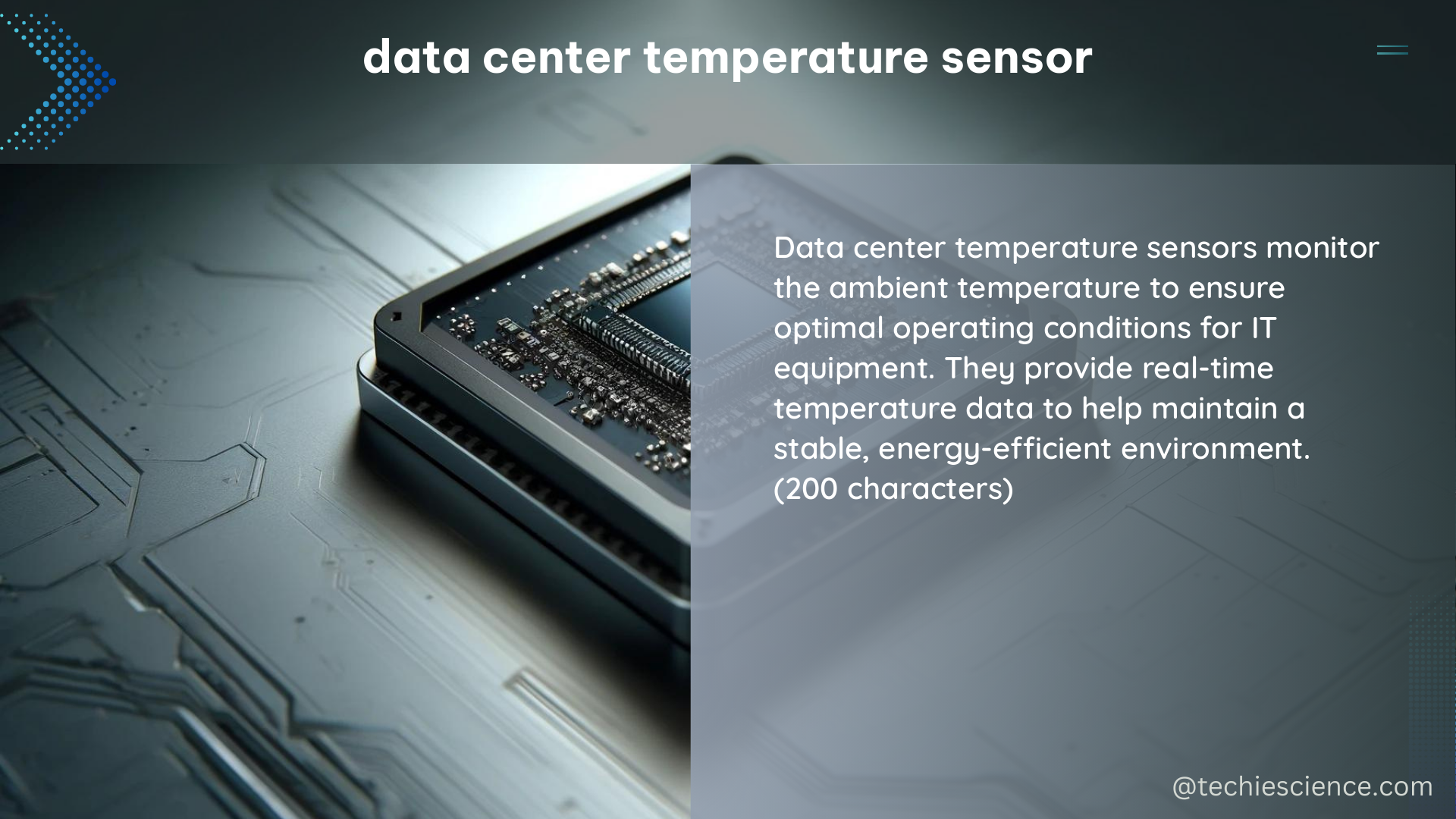Data centers are the backbone of modern digital infrastructure, housing the critical IT equipment that powers our connected world. Maintaining optimal environmental conditions within these facilities is paramount, and data center temperature sensors play a pivotal role in this endeavor. These sensors provide real-time, quantifiable data that enables data center operators to ensure the efficient and reliable performance of their IT assets.
Understanding the Role of Data Center Temperature Sensors in IT/OT Convergence
The convergence of Information Technology (IT) and Operational Technology (OT) has revolutionized the way data centers are managed. IT/OT convergence involves the integration of industrial control systems, such as Supervisory Control and Data Acquisition (SCADA), with enterprise IT resources. This integration allows for the seamless exchange of OT data, including temperature measurements, with IT systems, enabling more efficient and effective data center operations.
Data center temperature sensors are a crucial component of this convergence, as they provide real-world environmental data that can be used to optimize the performance of IT equipment. For example, in a wind turbine application, temperature sensors can detect wind direction and intensity, communicating this data to a central facility for analysis and optimization. This can lead to increased efficiency and reduced maintenance costs.
Leveraging Data Center Temperature Sensors for Laboratory KPI Monitoring

In addition to their role in IT/OT convergence, data center temperature sensors can also be utilized to monitor key performance indicators (KPIs) in laboratory settings. KPIs are quantifiable measures of laboratory performance, such as data quality and process optimization. Temperature sensors can provide valuable data on environmental conditions, including temperature and humidity, which can be used to ensure optimal laboratory performance.
Integrating Data Center Temperature Sensors with Data Acquisition Systems
When implementing data center temperature sensors, it is essential to consider the available data acquisition options. Environmental sensors, such as those for temperature and humidity, can be seamlessly integrated with existing platforms, such as Laboratory Information Management Systems (LIMS) or Enterprise Resource Planning (ERP) systems, for easy data logging and tracking.
In a digitalized laboratory setting, software solutions should have the capability to define, log, measure, and track KPI data, either internally or from connected sensors. Regular monitoring and analysis of these KPIs are crucial for identifying weaknesses in processes and optimizing overall performance.
Technical Specifications of Data Center Temperature Sensors
To ensure accurate and reliable temperature measurements, data center temperature sensors should possess the following technical specifications:
- Accuracy: The sensor should provide precise and consistent temperature readings, with minimal deviation from the actual values.
- Response Time: The sensor should have a fast response time, enabling it to quickly detect and respond to temperature changes within the data center or laboratory environment.
- Temperature Range: The sensor should have a wide temperature range, allowing it to measure temperatures across the various environments found in data centers and laboratories.
- Durability: The sensor should be designed to withstand the harsh conditions often encountered in data center and laboratory settings, such as high temperatures, humidity, and vibrations.
- Connectivity: The sensor should be capable of seamlessly integrating with existing data acquisition platforms, such as LIMS or ERP systems, for easy data logging and tracking.
Optimizing Data Center Performance with Temperature Sensor Data
By leveraging the data provided by data center temperature sensors, operators can make informed decisions to optimize the performance and energy efficiency of their IT equipment. This includes:
- Thermal Management: Temperature sensor data can be used to identify hot spots and monitor the effectiveness of cooling systems, allowing for targeted adjustments to maintain optimal operating temperatures.
- Energy Efficiency: By monitoring temperature trends and correlating them with energy consumption, data center operators can implement energy-saving strategies, such as dynamic cooling and server consolidation, to reduce overall energy usage.
- Predictive Maintenance: Temperature sensor data can be analyzed to detect early signs of equipment degradation, enabling proactive maintenance and preventing costly downtime.
- Compliance and Regulatory Adherence: Temperature sensor data can be used to demonstrate compliance with industry standards and regulatory requirements, such as those set by the American Society of Heating, Refrigerating and Air-Conditioning Engineers (ASHRAE).
Conclusion
Data center temperature sensors are a critical component of modern data center management, playing a pivotal role in IT/OT convergence and laboratory KPI monitoring. By integrating these sensors with data acquisition systems and leveraging the insights they provide, data center operators can optimize the performance, energy efficiency, and reliability of their IT infrastructure. As the digital landscape continues to evolve, mastering the use of data center temperature sensors will be essential for maintaining a competitive edge in the ever-changing world of data center management.
References:
- IT/OT Convergence Definition
- Laboratory Key Performance Indicators (KPIs)
- DCIM Still Matters
- Sensor Data Integration in Data Centers
- Reddit Discussion on Data Center Temperature Sensor

The lambdageeks.com Core SME Team is a group of experienced subject matter experts from diverse scientific and technical fields including Physics, Chemistry, Technology,Electronics & Electrical Engineering, Automotive, Mechanical Engineering. Our team collaborates to create high-quality, well-researched articles on a wide range of science and technology topics for the lambdageeks.com website.
All Our Senior SME are having more than 7 Years of experience in the respective fields . They are either Working Industry Professionals or assocaited With different Universities. Refer Our Authors Page to get to know About our Core SMEs.